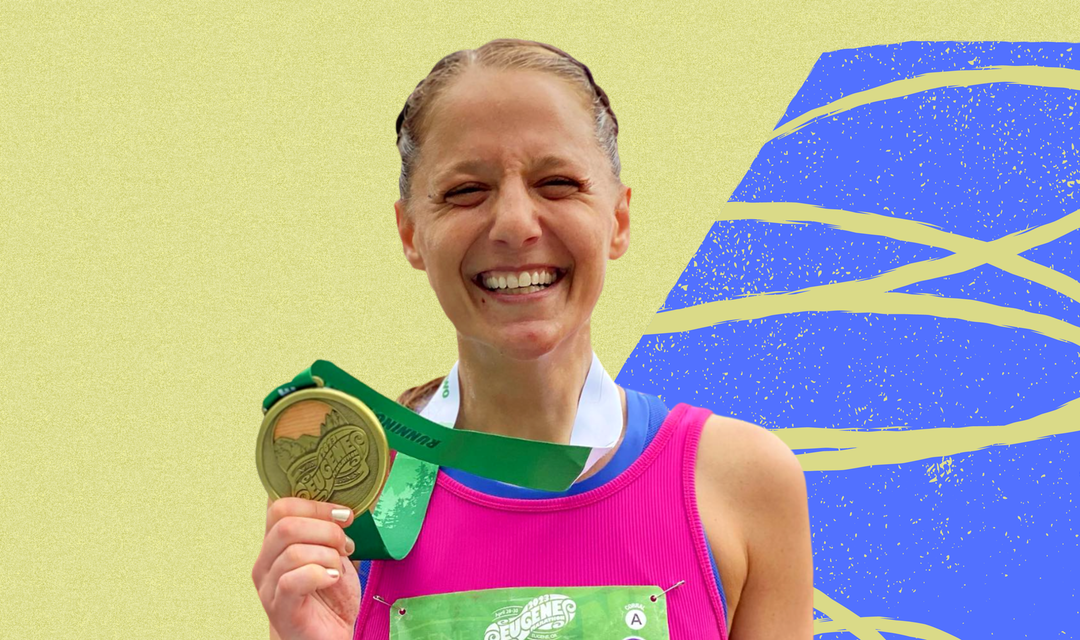It’s hard to say whether marathon training contributed to those flare, but my doctor and I agree that they’ve historically happened at high-stress times. Going off to college, studying abroad, getting a promotion, and moving all brought on symptoms.
Marathon training can obviously fit that bill, but I wanted to give it another shot. I hadn’t had a major flare in a few years, mainly because I found a medication that works for me. I also have an amazing gastroenterologist, who’s actually a fellow marathoner. He understands how important running is for me, for both my physical and mental well-being, so we’ve worked together to figure out when I really need to back off and when it makes sense to keep running.
I’ve also identified my trigger foods (corn kernels, popcorn, and jicama, which is actually one of my favorite foods), and I prioritize getting enough sleep, which for me, is seven to eight hours each night. I think running helps, too. Just being outside does wonders for my mental health.
But even when my Crohn’s is completely under control, it’s something I have to think about every single day. It’s been that way my whole life. Having gotten the diagnosis when I was seven, I don’t even know what it would be like to just wake up and leave the house, worry-free. And this is even more true regarding running.
Say, for example, I’m starting my morning with an eight-mile run. On a normal day, even when I’m feeling good and not experiencing a flare, I’ll generally poop two or three times before I leave the house, and I’ll usually make at least one bathroom stop on that run. It’s just guaranteed that I’m going to stop then because that’s when my stomach is most active. I might go again once I get home, but by lunchtime, I’m generally good for the day.
It’s definitely taken some trial and error to figure out what works for me. And while I think everyone needs to experiment to find out what works for their situation, these are some of the strategies I come back to that help me continue to lace up with Crohn’s.
Bring your own bathroom essentials.
Being prepared is non-negotiable. I’m not talking about “normal” things like dressing for the weather or making sure you have enough water. They’re important too, of course, but for me, I need to consider everything I might need just in case I need to go to the bathroom when there are no facilities in sight.
I always bring paper towels and a Ziplock bag to put them in, just in case there’s no way I can make it to an actual bathroom and have to go outside. Unfortunately, that does sometimes happen, and I hate it. I don’t think it’s funny or cute, but it’s not going to stop me from running.
In the winter, carrying my bathroom gear is easy; I put it in the pockets of my running vest or jacket. In the warmer months, I put it in my shorts’ pockets if they’re roomy enough. If not, I stuff it in my Koala Clip, which is designed as a carrier for your phone, but it works really well as a place to stash other things too.
Research the route ahead of time.
My pre-run prep also includes route reconnaissance. Other runners consult maps to check mileage and elevation, but I’m scouting bathrooms. I’m not just trying to figure out where the public restrooms are—I also need to know the details. Do you need to request a key or a passcode? Is there likely to be a line? Is it just a single restroom versus several stalls?

